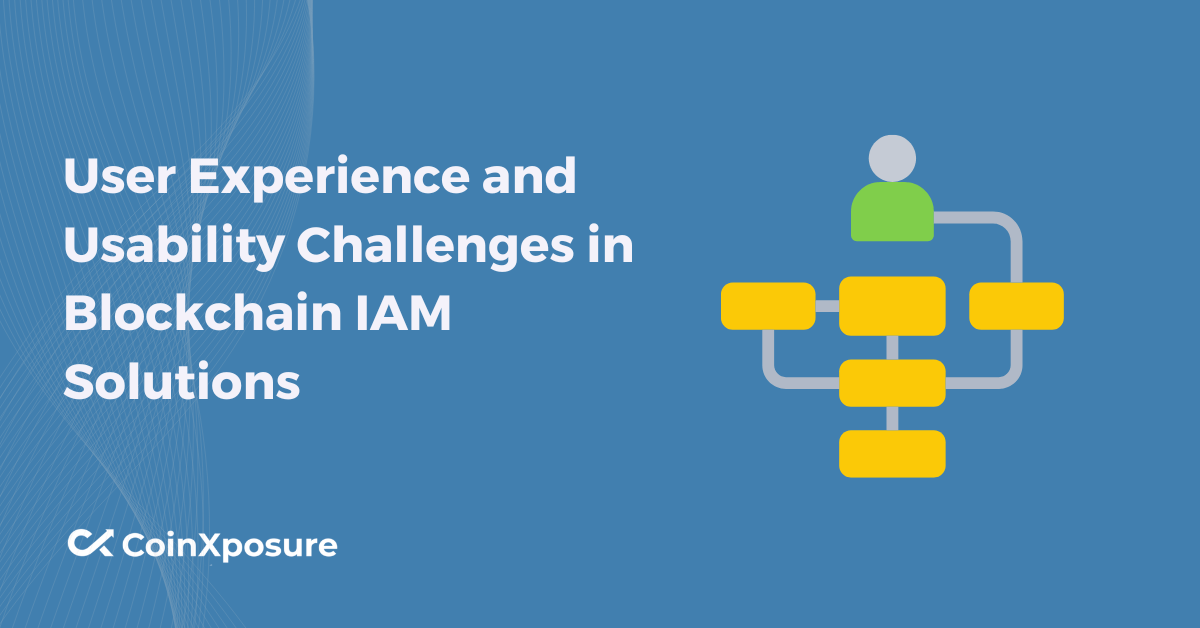
User Experience and Usability Challenges in Blockchain IAM Solutions
The intersection of User Experience (UX) and Usability in Blockchain Identity and Access Management (IAM) solutions presents a landscape fraught with unique challenges.
As blockchain technology evolves, the inherent complexities of cryptographic processes and decentralized systems introduce hurdles that directly impact how users interact with IAM platforms.
This article explores the intricacies surrounding onboarding, interface design, transaction visibility, scalability, security, and regulatory compliance, shedding light on the vital need for user-centric approaches in crafting effective and accessible blockchain IAM solutions.
User Experience Challenges
User Experience (UX) in the context of Blockchain Identity and Access Management (IAM) solutions encounters specific challenges that can significantly impact the effectiveness and adoption of these systems. Here are key UX challenges:
- Complex Onboarding Processes
- Lack of User-Friendly Interfaces
- Transaction Visibility and Confirmation
Complex Onboarding Processes
Registration and Identity Verification: Blockchain IAM often involves intricate registration processes, including identity verification through cryptographic methods. This complexity can overwhelm users, leading to frustration and potential abandonment.
Key Management: Managing cryptographic keys, a fundamental aspect of blockchain identity, can be challenging for users unfamiliar with cryptographic terminology and practices.
Lack of User-Friendly Interfaces
Cryptographic Terminology: Blockchain IAM solutions often rely on cryptographic concepts and terms that may be unfamiliar to the average user. Simplifying language and providing clear explanations become crucial for user comprehension.
Wallet Management: Users might struggle with the management of digital wallets, including key storage, backup, and recovery. Creating intuitive interfaces for wallet operations is vital for user adoption.
Transaction Visibility and Confirmation
Confirmation Time: Blockchain transactions, depending on the network, can have varying confirmation times. Long confirmation times can lead to user impatience and uncertainty about the status of their transactions.
User Feedback: Inadequate or unclear feedback during transaction processes can leave users uncertain about the success or failure of their actions, leading to anxiety and mistrust.
Addressing these challenges requires a focus on simplifying complex processes, providing clear communication, and designing interfaces that cater to users with varying levels of technical expertise. The aim is to make the blockchain IAM experience more accessible and user-friendly, ultimately driving broader adoption of decentralized identity solutions.
Usability Challenges
Here are usability challenges in blockchain identity:
- Scalability Issues
- Security Concerns
- Regulatory Compliance
- Transaction Speed
Scalability Issues
Network congestion in blockchain systems can result in delays and slow transaction processing times, adversely affecting the overall usability of IAM solutions.
As user traffic increases, scalability challenges may emerge, leading to degraded performance and potential disruptions in service.
Security Concerns
Balancing the need for high-security standards with user-friendly experiences poses a significant challenge. Striking the right balance is crucial to prevent compromising security for the sake of usability.
Users may be susceptible to phishing attacks and social engineering risks, particularly when dealing with cryptographic keys and sensitive information.
Regulatory Compliance
Compliance with Know Your Customer (KYC) processes and other regulatory requirements can introduce additional steps and complexities in the user journey, potentially hindering the usability of IAM solutions.
Meeting regulatory standards while maintaining a seamless user experience poses a delicate challenge that must be carefully addressed.
Transaction Speed
Slow transaction speeds can impede the user experience, especially in scenarios where quick confirmation is essential. This issue is closely tied to blockchain scalability and efficiency.
Addressing these usability challenges requires a holistic approach that considers the unique characteristics of blockchain technology while prioritizing a seamless and secure experience for users.
Solutions and Best Practices in Blockchain IAM Solutions
Here are some solution and best practices in blockchain IAM solutions:
- Improving Onboarding Processes
- Enhancing User Interfaces
- Transaction Optimization
Improving Onboarding Processes
Simplify registration procedures by minimizing the number of steps and incorporating user-friendly interfaces.
Provide clear instructions and guidance during the identity verification process, ensuring users understand each step.
Enhancing User Interfaces
Use plain language communication to explain cryptographic terms and processes, making the IAM interface more accessible to users with varying levels of technical expertise.
Design intuitive wallet management interfaces, emphasizing user control and visibility over their keys and transactions.
Transaction Optimization
Implement scalability solutions such as layer 2 protocols to alleviate network congestion and enhance transaction speed.
Offer real-time confirmation feedback to keep users informed about the status of their transactions, reducing uncertainty and improving overall satisfaction.
By implementing these solutions and best practices, blockchain IAM solutions can mitigate user experience and usability challenges, creating a more accessible, secure, and efficient environment for users interacting with decentralized identity and access management systems.
Conclusion
The fusion of User Experience (UX) and Usability within Blockchain Identity and Access Management (IAM) solutions demands a strategic approach to overcome inherent challenges.
From intricate onboarding processes to scalability and security concerns, navigating this landscape requires a delicate balance between cryptographic robustness and user-friendly design.
As the industry evolves, the imperative to streamline registration, simplify interfaces, optimize transactions, enhance security, and navigate regulatory compliance becomes increasingly crucial.
Solutions and best practices that prioritize user-centricity, transparency, and education are essential in creating a harmonious synergy between the complexities of blockchain technology and the end-users’ expectations.
The journey towards effective blockchain IAM solutions is an iterative process, emphasizing continuous improvement and adaptability.
By addressing the outlined challenges and embracing user-focused strategies, the blockchain community can foster a more inclusive, accessible, and secure digital environment, paving the way for the broader adoption of decentralized identity and access management systems.
